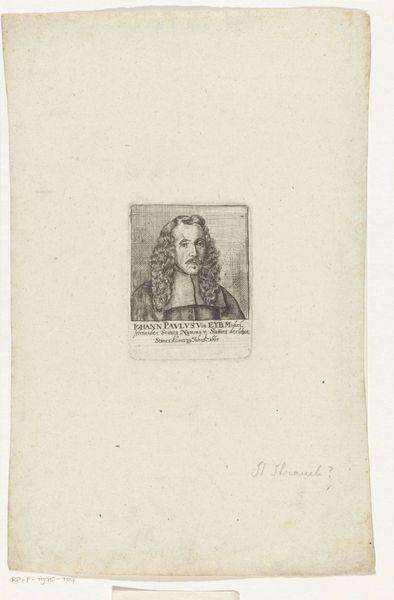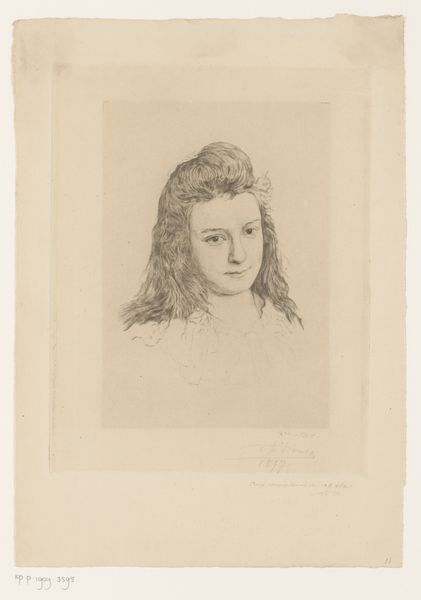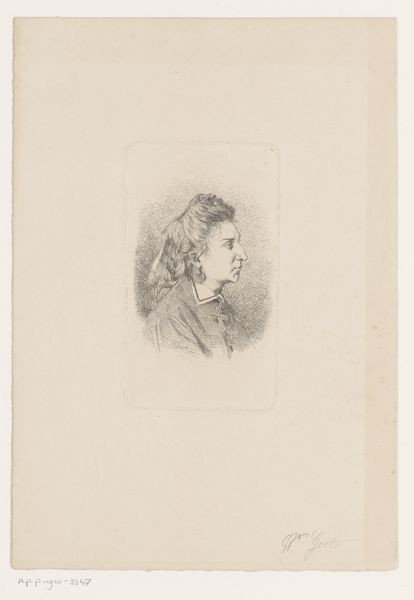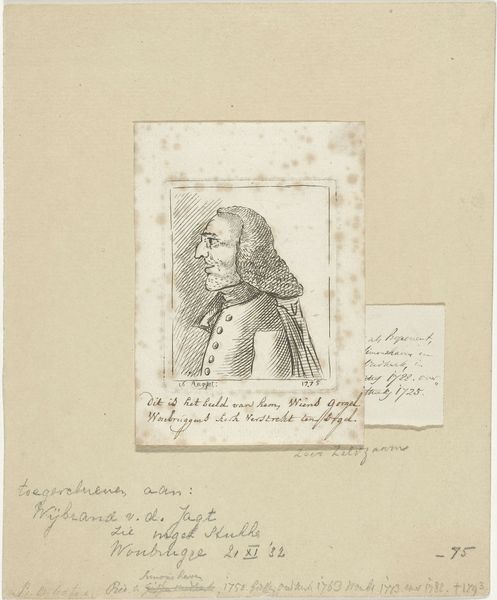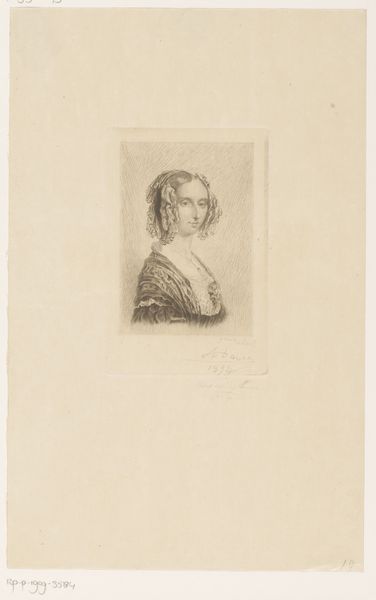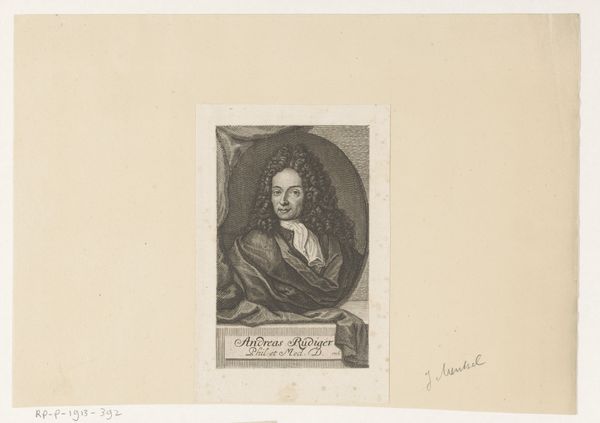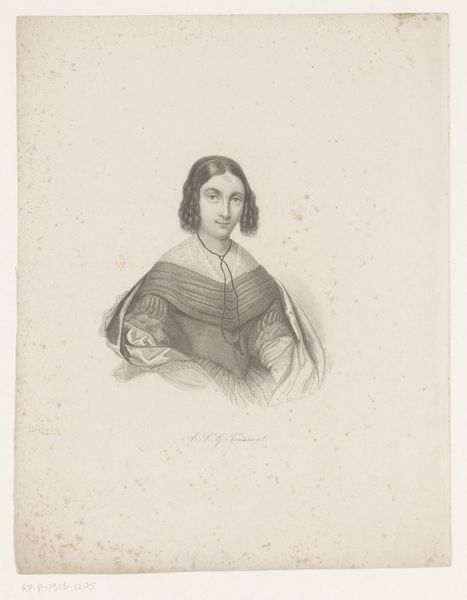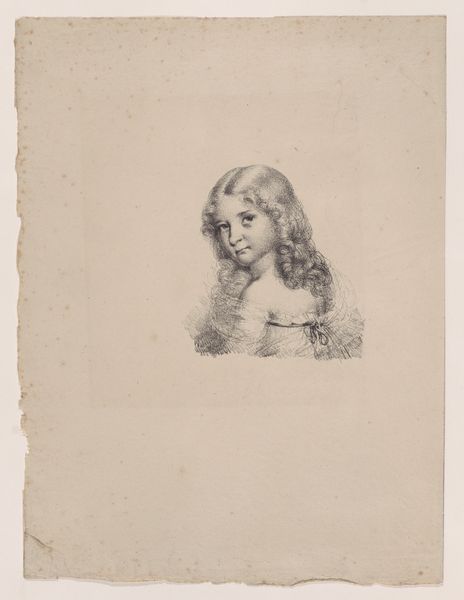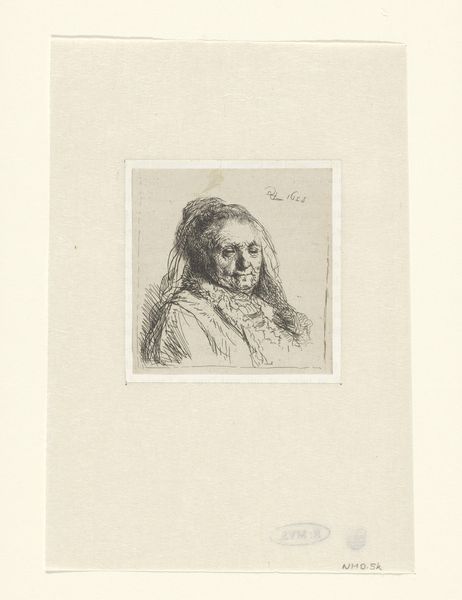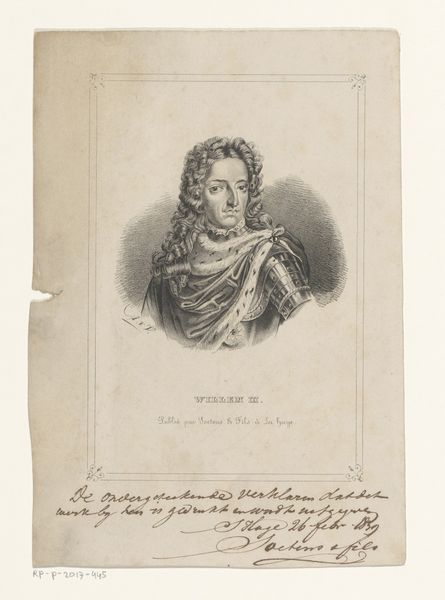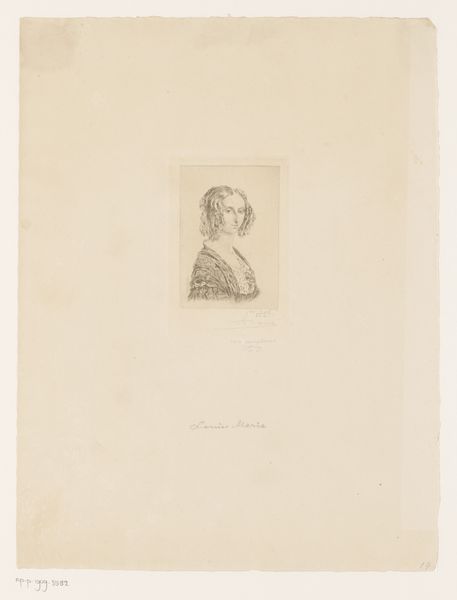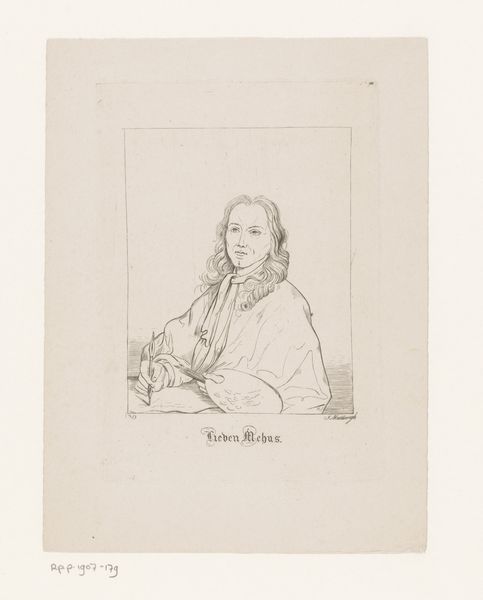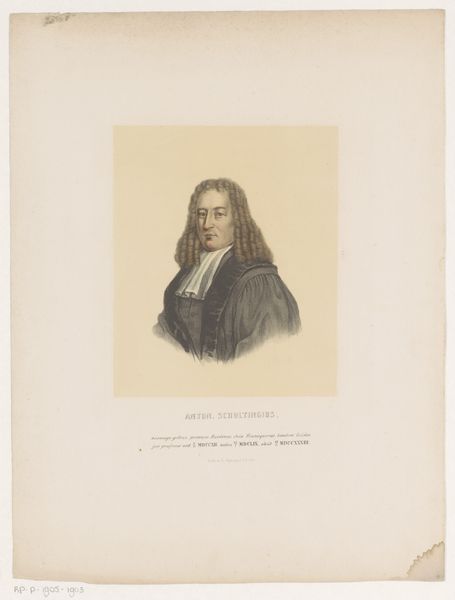
Dimensions: height 226 mm, width 164 mm
Copyright: Rijks Museum: Open Domain
Curator: My first impression? Intimate, almost delicate. There's a certain vulnerability to this rendering in pencil. Editor: Indeed. What we're looking at is titled "Portret van John Dunton, boekverkoper te Londen," or "Portrait of John Dunton, Bookseller in London." It's an anonymous work, dating roughly between 1825 and 1900. The medium is pencil on paper. Curator: The subject’s attire and that voluminous wig place him earlier, doesn't it? The sketch captures that Baroque sensibility, yet produced so much later! I'm fascinated by the process—the subtle gradations achieved with just pencil. What was the artist hoping to convey, choosing such a readily available, modest material? Editor: Good question. Consider the historical context. By the late 19th century, printed images were becoming more commonplace. This drawing, perhaps copied from an earlier engraving, participates in the circulation of images of notable figures, like Dunton. These images contributed to the public construction of identity, but, let’s be real, they helped establish and maintain a sort of cultural and political power too. Who decides who gets remembered and how? Curator: Right, and who had access to pencils, paper, and the time to dedicate to replicating images? This was far from universal. It tells us about class, about leisure, and access to education. There’s an intimacy to pencil; it's so immediate, it registers every shift in pressure, the artist’s very hand…but also their resources. Editor: And the sitter! John Dunton was indeed a prominent London bookseller in the 17th century. So, in this drawing created centuries later, we have a visual artifact memorializing not only the man but also the evolving book trade itself. Think about it—the original context in which Dunton produced and sold books is long gone. Curator: Which begs the question, how would an ordinary viewer during this portrait’s creation react, coming face to face with an idealized image of someone connected to print culture? The creation and viewing were separate, but together it presents a complete artifact. Editor: Absolutely, especially when you consider this probably wasn’t viewed as “high art,” but a more functional reproduction made available in broader cultural formats of its era. Curator: So, we end up examining not only a portrait but the socio-economic systems enabling both its creation and Dunton’s fame, a quiet commentary rendered with such humble materials. Editor: Precisely. It is, at its heart, an intriguing window into shifting cultural values and image production within 19th century British society.
Comments
No comments
Be the first to comment and join the conversation on the ultimate creative platform.
